Bio-Based Nylon PET-Bottle recycling Battery Can chemical recycling be dangerous? 18-07-2023 - Arhive
Bio-Based Nylon PET-Bottle recycling Battery
Crude Oil Prices Trend
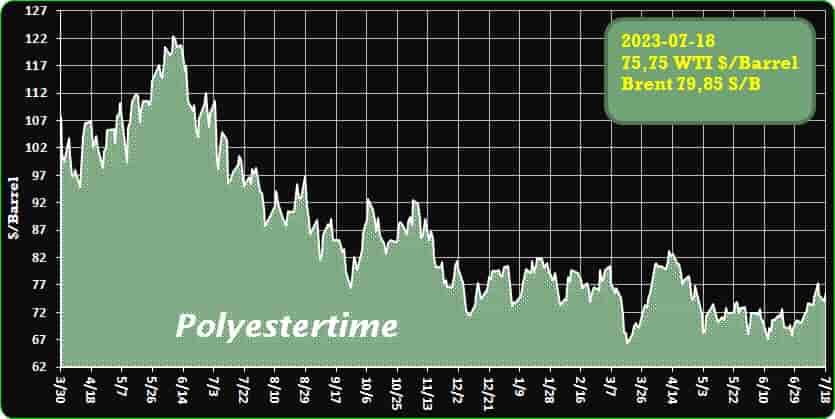
Crude Oil Prices Trend by Polyestertime
Research Team Develops Process for Bio-Based Nylon: A research team from the Helmholtz Centre for Environmental Research (UFZ) and the Leipzig University has made significant progress in developing a sustainable process for producing nylon, a widely used synthetic fiber
Traditionally, nylon has been derived from petroleum-based resources, which is detrimental to the environment due to the use of non-renewable fossil fuels, high energy requirements, and the emission of nitrous oxide, a potent greenhouse gas. In their study published in Green Chemistry, the team presents a novel approach that utilizes electrochemical synthesis and microorganisms to produce adipic acid, one of the key building blocks of nylon, from phenol. Moreover, they demonstrate the potential of using waste materials from the wood industry as an alternative feedstock for bio-based nylon production. Bio-Based Nylon PET-Bottle recycling Battery
Nylon, known for its versatile applications in various products such as T-shirts, stockings, ropes, parachutes, and car tires, has predominantly been manufactured from fossil-based raw materials. However, this petrochemical process has significant environmental drawbacks, including the global release of approximately 10% of nitrous oxide emissions and substantial energy consumption. Dr. Falk Harnisch, the head of the Electrobiotechnology working group at UFZ, explains that their objective is to revolutionize the entire nylon production chain by adopting an environmentally friendly approach. This can be achieved by utilizing bio-based waste as the feedstock and establishing a sustainable synthesis process. Bio-Based Nylon PET-Bottle recycling Battery
The researchers from Leipzig, led by Dr. Falk Harnisch and Dr. Rohan Karande, describe their innovative method in the Green Chemistry publication. Adipic acid constitutes approximately 50% of nylon composition and has traditionally been obtained from petroleum sources through an energy-intensive process involving high temperatures, gas pressure, and organic solvents. Bio-Based Nylon PET-Bottle recycling Battery
This conventional approach also contributes significantly to the emission of nitrous oxide and carbon dioxide. In their study, the team develops a process that employs electrochemical synthesis to convert phenol into cyclohexanol, a crucial intermediate in adipic acid production. Bio-Based Nylon PET-Bottle recycling Battery
Unlike the conventional method, electrochemical synthesis utilizes electric energy in an aqueous solution, eliminating the need for hydrogen gas, high temperatures, and pressure. Dr. Micjel Chávez Morejón, the first author of the study and a chemist at UFZ, highlights the efficiency of their process, which yielded nearly 70% electrons and over 70% cyclohexanol in laboratory experiments. They achieved these impressive results using a carbon-based rhodium catalyst, which maximized electron yield and phenol conversion efficiency. Bio-Based Nylon PET-Bottle recycling Battery
Building on previous research by other UFZ working groups, led by Dr. Katja Bühler and Dr. Bruno Bühler, the Leipzig researchers successfully demonstrated the microbial conversion of cyclohexanol into adipic acid using the bacterium Pseudomonas taiwanensis. Previously, the microbial conversion of phenol to cyclohexanol had not been possible, but the electrochemical reaction filled this crucial gap. Dr. Rohan Karande, who continues this work in collaboration with UFZ at the University of Leipzig, emphasizes the importance of this achievement in realizing a sustainable synthesis of adipic acid. Bio-Based Nylon
The researchers further advanced environmentally friendly nylon production by developing an alternative to phenol derived from fossil fuels. They utilized monomers such as syringol, catechol, and guaiacol, which are by-products of lignin degradation in the wood industry. Dr. Falk Harnisch highlights their success in converting these model substances all the way to adipic acid, stating that utilizing waste products from the wood industry could have a significant impact on the global market. Bio-Based Nylon PET-Bottle recycling Battery
While the development of lignin-based nylon still requires further refinement before it can enter the market, the researchers have already achieved a promising yield of 57% in the overall process, including microbial and electrochemical reaction steps, over a 22-hour period. These results are based on laboratory-scale tests, and the next two years will focus on scaling up the process. Bio-Based Nylon PET-Bottle recycling Battery
This technology transfer necessitates a comprehensive understanding of the entire process, the utilization of real lignin mixtures instead of model mixtures, and improvements in electrochemical reactors. Dr. Harnisch and Dr. Karande emphasize the immense potential of electrochemical-microbial processes, exemplified by the lignin-based nylon production, in creating an optimized process chain through intelligent integration of various components.
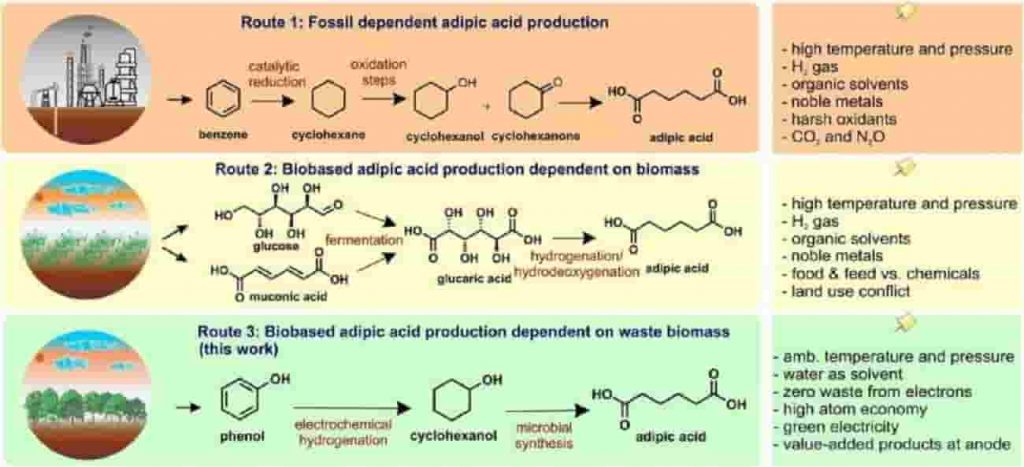
China’s Cutting-Edge Solution: Revolutionary Battery Breakthrough
China continues to lead the way in the realm of electric power, and once again they have surpassed expectations with a groundbreaking battery innovation that addresses various issues plaguing electric cars, particularly in cold temperatures.
A new battery model, developed in China, is set to revolutionize the electric car industry by tackling the challenges associated with low temperatures. During winter months, electric cars experience reduced range and degraded charging performance, presenting a significant obstacle. However, Chinese company CATL has recently announced a breakthrough technology that promises to exponentially enhance battery efficiency in cold conditions. Bio-Based Nylon PET-Bottle recycling Battery
While specific details are still limited, CATL’s chief scientist, Wu Kai, revealed that the company has made significant advancements in innovative electrolyte materials, which are poised to improve the charging efficiency of existing batteries available on the market. Wu Kai stated that preliminary research indicates a potential 50% efficiency increase in extreme cold temperatures, reaching as low as -20 degrees Celsius, and a 43% increase in less extreme conditions. Bio-Based Nylon PET-Bottle recycling Battery
Although the readiness of this technology for market launch remains uncertain, it appears likely that CATL will soon be able to produce these batteries for car manufacturers. This news is particularly exciting as it highlights the rapid progress being made in research and the potential for continuously improving battery performance.
Furthermore, CATL announced their intention to begin mass-producing a powerful battery with fast charging capabilities by the end of 2023. This battery is expected to offer a range of 400 kilometers, likely referring to the CLTC cycle, with a quick charge estimated to take just 10 minutes. The company’s long-term goal is to further reduce charging times to a remarkable 5 or 7 minutes. Bio-Based Nylon PET-Bottle recycling Battery
In discussing the current focus on solid-state batteries, a technology that many automakers are investing in, Wu Kai expressed skepticism. He noted the numerous doubts surrounding the availability of solid-state batteries for mass production. According to Wu Kai, no company currently possesses the capability to mass-produce solid-state batteries, despite recent progress made by the Japanese automaker Toyota, who plans to commence mass production in 2027 after overcoming initial challenges.
China’s CATL remains at the forefront of battery innovation, showcasing their commitment to solving key issues in the electric car industry. Bio-Based Nylon PET-Bottle recycling Battery
As they continue their groundbreaking research, the future looks promising for more efficient and rapidly charging batteries that will drive the widespread adoption of electric vehicles.
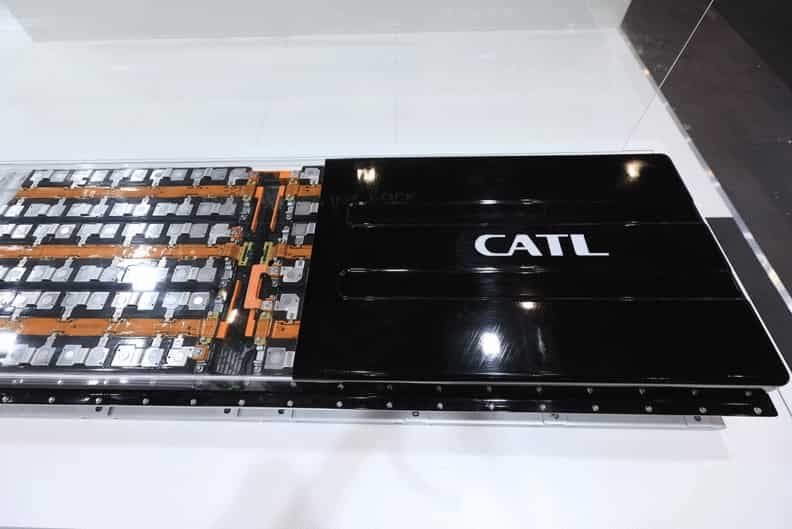
Asia is projected to take the lead in global PET capacity expansions by 2027, capturing a 61.8% share, according to a report by GlobalData, a prominent data and analytics company
The report, titled “Polyethylene Terephthalate (PET) Industry Installed Capacity and Capital Expenditure (CapEx) Forecasts by Region and Countries including details of All Active Plants, Planned and Announced Projects, 2023-2027,” highlights that Asia will witness substantial growth in PET capacity through new construction and expansion projects between 2023 and 2027. The region’s total PET capacity from these projects is estimated to reach 5.21 million tonnes per annum (mtpa) by 2027.
The increased demand for plastics in various industries, including food and beverages, FMCG, and pharmaceuticals, serves as a driving force for the PET industry’s growth in Asia. Bio-Based Nylon PET-Bottle recycling Battery
Nivedita Roy, an Oil and Gas Analyst at GlobalData, explains, “Asia is expected to add a capacity of 5.13 mtpa from six planned and announced projects, while an additional capacity of 0.08 mtpa is anticipated from two expansion projects in the region.”
China and India are the key countries contributing to PET capacity expansion in Asia. In China, the major capacity addition will come from the Zhejiang Petrochemical Daishan Polyethylene Terephthalate Plant 2, an announced project with a capacity of 2 mtpa, slated to begin PET production in 2026. Bio-Based Nylon PET-Bottle recycling Battery
Meanwhile, Reliance Industries Dahej Polyethylene Terephthalate Plant 2 in India, with a capacity of 1 mtpa, is expected to go online in 2026 and will be a significant contributor to PET capacity growth in the country.
For more information, please visit GlobalData’s website.
Bio-Based Nylon PET-Bottle recycling Battery
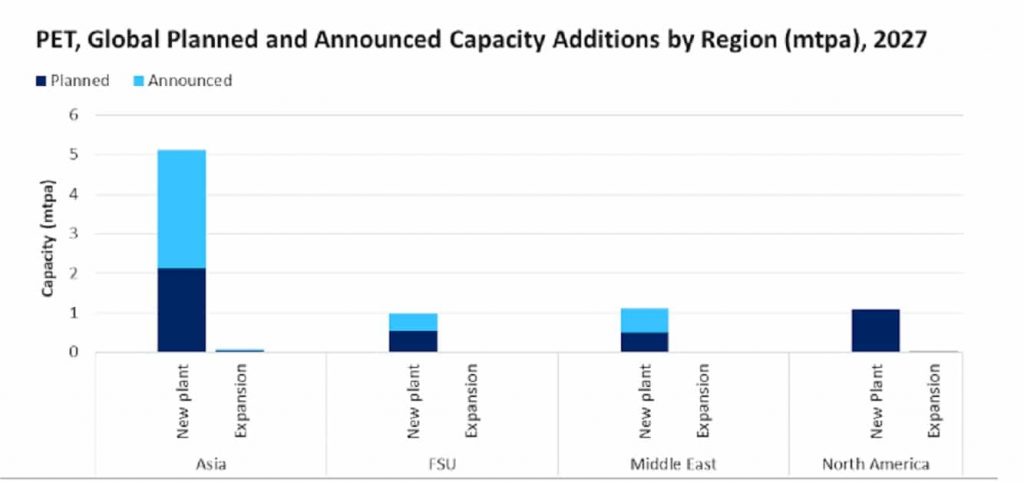
Plant: Transforming Environmental Waste into Clean Energy
Introduction: In today’s era of environmental sustainability, finding effective solutions to waste management and carbon reduction is crucial.
A revolutionary innovation, waste tire plastic pyrolysis plants, has emerged as a game-changing technology. These advanced facilities not only address waste management challenges but also generate clean energy. Henan Doing Mechanical Equipment Co., Ltd is a leading manufacturer of these state-of-the-art pyrolysis plants, offering them for sale worldwide. Bio-Based Nylon PET-Bottle recycling Battery
Environmentally Sustainable Waste to Energy Solutions: The waste tire plastic pyrolysis plant utilizes cutting-edge pyrolysis technology to convert waste tires and plastic into valuable resources. By subjecting the waste materials to high heat in an oxygen-free environment, the plant breaks them down into syn-gas, fuel oil, and carbon black. These by-products can be sold directly or used as fuel and raw materials across various industries, including steel plants, cement plants, heavy oil generator plants, boiler heating, and heavy fuel oil (HPO) power plants. Bio-Based Nylon PET-Bottle recycling Battery
Positive Environmental Impact: One of the key advantages of the waste tire plastic pyrolysis plant is its significant positive impact on the environment. By diverting waste tires and plastic from landfills, these plants effectively reduce greenhouse gas emissions and prevent soil and water pollution. Furthermore, the clean energy produced during the process can power the plant itself, promoting self-sustainability and reducing dependence on conventional energy sources. Bio-Based Nylon PET-Bottle recycling Battery
Marketing Opportunities and Circular Economy: Investing in waste tire plastic pyrolysis plants offers a unique selling proposition for companies. By embracing these innovative technologies and promoting the use of clean energy and sustainable waste management practices, businesses can position themselves as environmentally responsible and contribute to the circular economy. This approach attracts eco-conscious consumers who prioritize sustainability in their purchasing decisions.
Job Creation and Economic Growth: Additionally, waste tire plastic pyrolysis plants create job opportunities and stimulate the local economy. The construction and operation of these plants require skilled labor, providing employment opportunities to the local community. Moreover, the production of valuable by-products such as oil and carbon black can be sold, generating revenue and fostering economic growth. Bio-Based Nylon PET-Bottle recycling Battery
Embrace a Greener Future: In conclusion, waste tire plastic pyrolysis plants represent a win-win solution for both the environment and businesses. By transforming waste into clean energy and valuable resources, these plants contribute to waste management, reduce carbon emissions, and promote sustainability. Investing in this technology not only showcases a company’s environmental responsibility but also unlocks economic potential. Let’s embrace the innovative waste tire plastic pyrolysis plant and work together towards a greener future. Bio-Based Nylon PET-Bottle recycling Battery
To learn more about waste tire plastic pyrolysis plants or inquire about purchasing options, please contact Henan Doing Company:
- Whatsapp/Tel: +86 13526692320
- E-mail: oilmachine@wastetireoil.com
- Official Website: Leading Manufacturer of Waste Tire Plastic Pyrolysis Plants
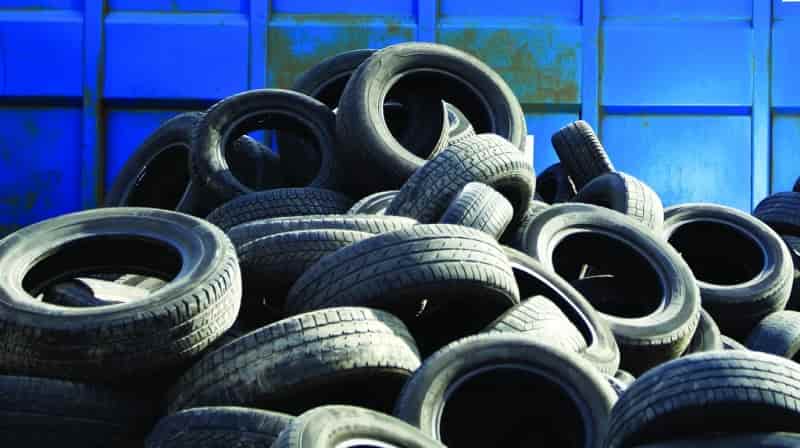
The Risks of ‘Chemical Recycling’
So-called ‘chemical recycling’ of plastics is a highly inefficient process that releases large amounts of carbon emissions and hazardous pollutants.
James Bruggers reports for Inside Climate News and joined Host Steve Curwood to discuss the health and safety problems he’s been covering at the Brightmark chemical recycling plant in Indiana.
When plastics are recycled, they have to be sorted according to those numbers 1 through 7. And even when everything does make it into the right bin and facility, you’d be mistaken to think that the plastic enters an endless cycle of rebirth. In reality, numbers 3 through 7 are almost impossible to recycle. And even the more easily recycled number 1 and 2 plastics can’t be infinitely renewed because the polymers they are made of degrade each time the plastic is melted down.Bio-Based Nylon PET-Bottle recycling Battery
Now industry groups like the American Chemistry Council are promoting so-called chemical recycling or “advanced recycling” as a solution. This technique uses high heat, chemical reactions, or both to break down the plastic back into its raw materials so that it can be used to rebuild polymers from scratch. But many scientists and environmentalists say it’s disingenuous to call this process “recycling” since it’s highly inefficient and releases large amounts of carbon emissions and hazardous pollutants. And at the Brightmark chemical recycling plant in Indiana, health and safety concerns have kept the plant from operating at full capacity. James Bruggers has been covering this for our media partner Inside Climate News and joined Host Steve Curwood to explain.
CURWOOD: So, what exactly is chemical recycling and how much recycling is this chemistry?
BRUGGERS: Well, first of all, you know, we need to remember that there just isn’t much recycling going on at all. You know, there’s globally less than 10% of the plastic waste that’s generated gets recycled.Bio-Based Nylon PET-Bottle recycling Battery
And most of that is a mechanical process, where you have this plastic waste that’s sorted, it’s cleaned, it’s shredded, and then it’s molded into new plastic products. With chemical recycling, which sort of falls under this industry umbrella of what they call advanced recycling., they break the plastic waste chemically down into its chemical constituents or feedstocks that would be used by the chemical industry to produce new plastic. So, what are some of those feedstocks? Well, naphtha is one, toluene, xylene, benzene and stuff like that. So that’s what is going on at a chemical recycling plant. You know, there’s just an awful lot of the plastic waste that gets lost in the process because in the case of pyrolysis, it makes a lot of gas, which is then used to create heat for this very heat intensive process. And that gas never gets used to make new plastics, it’s kind of lost in the process. Bio-Based Nylon PET-Bottle recycling Battery
CURWOOD: James tell me about some of the environmental health and safety challenges that Brightmark, this company that does this so-called chemical recycling in northern Indiana, what are some of the environmental health and safety challenges that the company has faced, since it began with this plant, what in 2020 I believe it is?
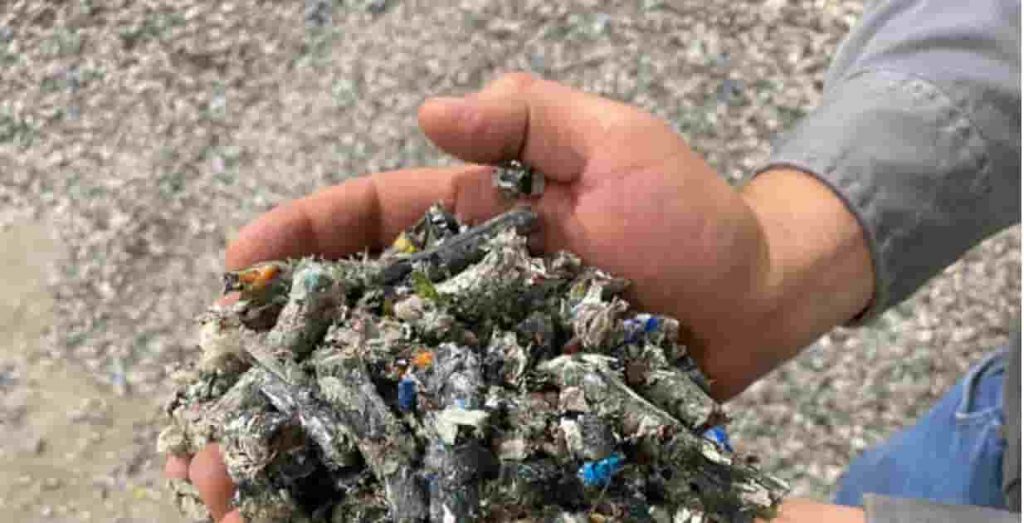
Loop Industries is undervalued, says Paradigm
With strong production economics for its plastics processing plants and a number of joint venture facilities breaking ground, it’s time for investors to get in the loop with Canadian cleantech company Loop Industries .
That’s according to J. Marvin Wolff of Paradigm Capital, who reviewed the latest quarterly results from Loop in a Friday update and reiterated a “Buy” rating and $6.30 target on the stock, good for a implied one-year return at the time of publication of 100 per cent.
Montreal-based Loop Industries, which has a patented technology to supply CPG companies with PET plastic and polyester fibre made from 100 per cent recycled content, announced its first quarter fiscal 2024 results on Wednesday and provided an update on operations. Bio-Based Nylon PET-Bottle recycling Battery
The company posted an EPS loss of $0.15 per share, with no significant revenue, and reported having $23 million in cash at the end of the quarter. Loop has a strategic partner in SK GeoCentric, with whom it has signed a joint venture to build four commercial manufacturing Infinite Loop facilities for the Asian market by 2030. Loop said the first planned facility in Ulsan, South Korea, is expected to start construction this year and reach completion by the end of 2025.
Loop also has a three-way JV with SKGC and SUEZ, with the group now having chosen Saint-Avold, France, as a site for a Loop Infinite PET plant, with construction to begin in 2025 and commissioning projected for 2027.
“The signing of the joint venture agreement with SKGC in the first quarter marks the next phase in our strategic partnership with them, as we progress towards breaking ground later this year on our Infinite Loop manufacturing facility in Ulsan, South Korea.
We are very excited to expand our technology into the Asian market to support our global brand customers by supplying them with Loop branded PET resin and polyester made from 100 per cent recycled content,” said Loop founder and CEO Daniel Solomita in a press release. Bio-Based Nylon PET-Bottle recycling Battery
Commenting on the fiscal Q1 release, Wolff said the EPS loss of $0.15 per share compared to his estimate of a $0.12 per share loss. The company’s balance sheet needs bolstering, he said, noting that Loop has significantly reduced its burn rate to about $16 million per year.
“Loop’s unique 100 per cent-recycled product is expected to command a premium price, generating very strong economics, thus achieving a 45–50 per cent EBITDA margin and 20 per cent+ IRRs at each of its production facilities. With an estimated EBITDA generation of $100 million per full-scale plant (assuming 100 per cent ownership), and a goal of six plants by 2030, we see meaningful EBITDA growth over the next decade,” Wolff wrote.
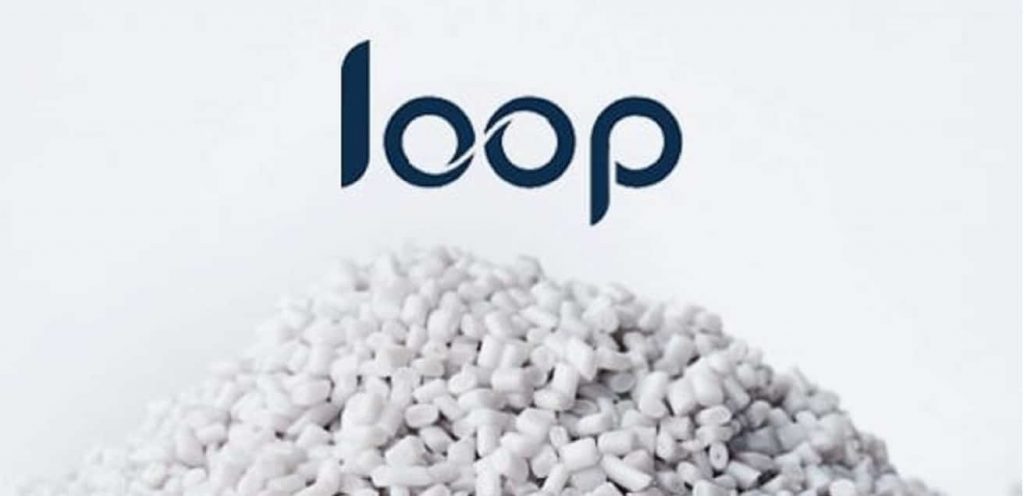
Twin Screw Extruder for Chemical Recycling
Coperion will deliver a twin screw extruder and corresponding peripherals for a chemical recycling plant that Belgian waste management company Indaver is building to transform plastic waste into basic chemicals. Bio-Based Nylon PET-Bottle recycling Batteryvv
The chemical recycling plant is currently under construction in Antwerp, Belgium and is expected to annually transform 30,000 tons of so-called end-of-life plastics into high-quality basic chemicals. Indaver decided upon Coperion’s twin screw extruder technology to ensure energy-efficient, continuous reactor loading in the chemical plastics recycling process. Along with the extruder, the order includes Coperion K-Tron gravimetric feeders, a vacuum unit, a closing valve, and the melt line to the reactor.
Where mechanical plastics recycling reaches its limits, Indaver picks up with its depolymerization process Plastics 2 Chemicals (P2C). The company reclaims materials from mixed polyolefin and polystyrene streams, closing the loop for these plastics with no loss in quality. In the recycling process, plastics are broken down into shorter carbon chains or monomers. Base products such as naphtha (raw benzine) and wax result from polyolefins (PE and PP). Polystyrenes are split into monomers that can be reused as raw material. Bio-Based Nylon PET-Bottle recycling Battery
The twin screw extruder assumes a central function in Indaver’s process. Before plastic waste can be fed into the reactor, it must pass through the extruder’s process section at throughputs of up to 3.7 tons per hour. Using intensive shearing and dispersion, the extruder’s twin screws introduce a large amount of mechanical energy into the material stream in a very short period of time. In just 30 seconds, the agglomerated post-consumer waste is transformed into a homogeneous, up to 350°C (660°F) hot melt in an energy-efficient process.
A Coperion K-Tron gravimetric feeder continuously feeds agglomerated plastic waste into the twin screw extruder. The melt exits the extruder just as uniformly, ensuring constant loading of the likewise continuously operating P2C plant’s reactor.
An additional Coperion K-Tron gravimetric feeder regulates the addition of additives into the extruder’s process section, where they are homogeneously mixed in. At the same time, the remaining moisture in the agglomerated plastic is reduced via the extruder’s devolatilization. Bio-Based Nylon PET-Bottle recycling Battery
The added value of the extruder in Indaver’s depolymerization process has been proven in tests at Coperion’s Test Center. According to Frank Lechner, General Manager Process Technology and Research & Development at Coperion: “ZSK twin screw extruders possess numerous advantages that are especially beneficial in chemical recycling. Thanks to the twin screws’ effective operation, plastic energy dissipation takes place in no time – one core advantage for energy efficiency. In chemical recycling, ZSK technology covers a very wide throughput range of 1 kg to 20 tons per hour, allowing high-capacity product streams to be processed, even those anticipated in the future.
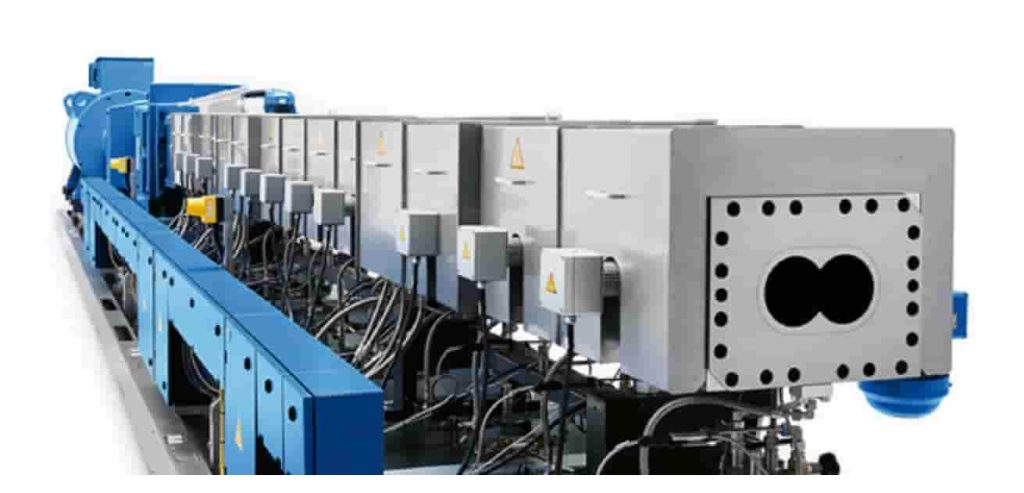
Bio-Based Nylon PET-Bottle recycling Battery
Plastic recycling Automotive – Will plastic composites continue to growth? 17-07-2023
